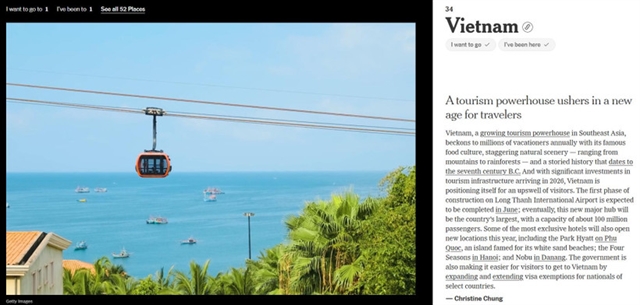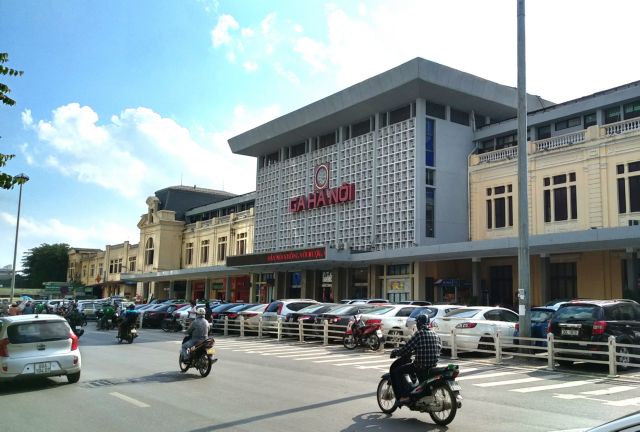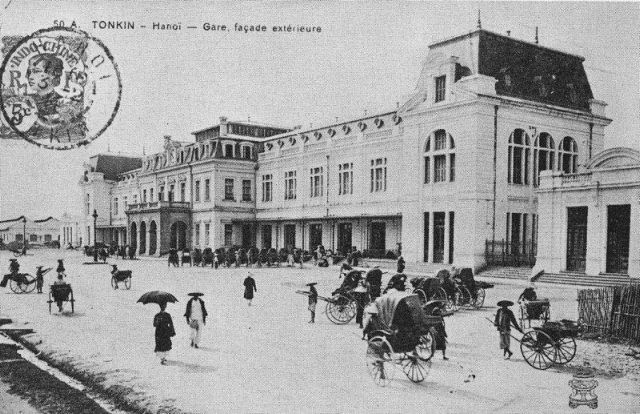 Life & Style
Life & Style


|
| The exterior of Hà Nội station showcasing a mix of French colonial and modern architecture, much like the city itself. VNS Photo Đoàn Tùng |
By Karim Raslan
In 1936, when the French first launched the “Transindochinois” railway service linking Hà Nội with Sài Gòn, there were gala celebrations, sports competitions and commemorative stamps galore – all presided over by the debonair Governor-General and the Vietnamese Emperor, Bảo Đại.
The train itself was the apogee of Gallic style, completing the 1,730km journey in 40 hours, offering four different classes, sleeper compartments and a buffet car. Sadly, the Japanese invasion of French Indochina and WWII ended the service within four years, leaving just the memory of what remains the longest regular rail trip in Southeast Asia.
The present-day service, dubbed the “Reunification Express”, may not be quite so glamorous, but with six departures a day and five different classes, (including sleeperettes – Team Ceritalah’s choice) it provides a more romantic and leisurely alternative to the sixty or so flights that shuttle between the two key Vietnamese hubs every day.
At 36 hours of travelling time, it’s also four hours shorter than the original service.
Team Ceritalah recently made the one-and-a-half-day journey from the capital to the steamy southern business centre, experiencing the full gamut of Vietnamese society: the reserved northerners, the livelier, more relaxed residents of the central region and the warm exuberance of the south.

|
| Now known as Hà Nội Railway Station, Hàng Cỏ Railway Station was built by the French in 1902 and has become a central destination in the capital city and a key hub in the country's transportation system. Photo courtesy of the Hà Nội Railway Station |
The most exciting, if not breath-taking moment, was when the train suddenly emerged alongside the sea at Huế in the early morning.
Team Ceritalah booked the upper bunks, which weren’t too easy to clamber into given the height and awkwardly placed steps. In retrospect, they were more suited to the athletically-inclined – or mountain-climbers.
Still, the cabins, with their degree of privacy, represented an infinitely more comfortable alternative to the hard, wooden seats in the economy class: though those passengers compensated by bringing mats to sleep on, sprawled out on the carriage floor.
Food onboard was disappointing. Most travellers brought their own supplies, along with prodigious amounts of cup noodles which they supplemented with whatever they could find at the food-stalls located on the train platforms when the express stopped (albeit briefly) at stations like Huế and Đà Nẵng.
The train journey is like a microcosm of Vietnamese society. People are neat and responsible; clearing away their own rubbish and keeping a wary eye on the small children dashing around: a hard-working and motivated citizenry, with a strong sense of family.
Even though the present service is less stylish than its French predecessor, for some travellers such as Hanh (not her real name) a sixty year old grandmother from the northern town of Hải Dương, it seemed as if the train journey was a way of reconnecting with her childhood memories.
She talked wistfully of the past. “Those were hard times,” she said, with a wry smile. “Back then, we could only travel within North Việt Nam and the trains were dirty and overcrowded. Now, the service is so much better.”
Indeed, she remembered, as a small girl, wondering if the train ran across land or water. Now, she was determined to complete the one-way trip (she would be flying back home to Hà Nội after spending time with her relatives in the South) in order to know for sure.

|
| Passengers admiring the scenery rushing past the window of a north-south train. Photo tuoitre.vn |
Train journeys are by their very nature long and drawn out. There’s a lot of staring into space, thinking and watching the scenery – endless rice paddies, cornfields, vegetable gardens and lotus ponds – a testament to the increasing prosperity of rural Việt Nam.
There’s also the steady rattling and hum of the train’s progress, the monotonous rhythm of which cocoons and envelopes you. It’s a kind of bubble that further deepens your contemplative mood.
There’s no point fighting it. You let it take over and your mind soars: both back in time, reassessing your memories much like Hanh the grandmother; and into the future, as you watch the little children playing.
I spend so much time in planes, whizzing here and there for lunches, dinners and meetings, that for me, a train journey – and even one that I experience second-hand – is an immense luxury. It makes me think back to a time before I had to hurry constantly, before the tyranny of my schedule throttled the spontaneity out of my everyday existence.
By the end of the journey, you should feel slightly discomfited by all the hours (thirty-six to be exact) of sitting and lying around.
However, it’s the delicious melancholy – thankfully separated from your handphone given the erratic signal – that will leave you aching and yet pleased to have spent the time alone with your thoughts. — The Star/ANN




